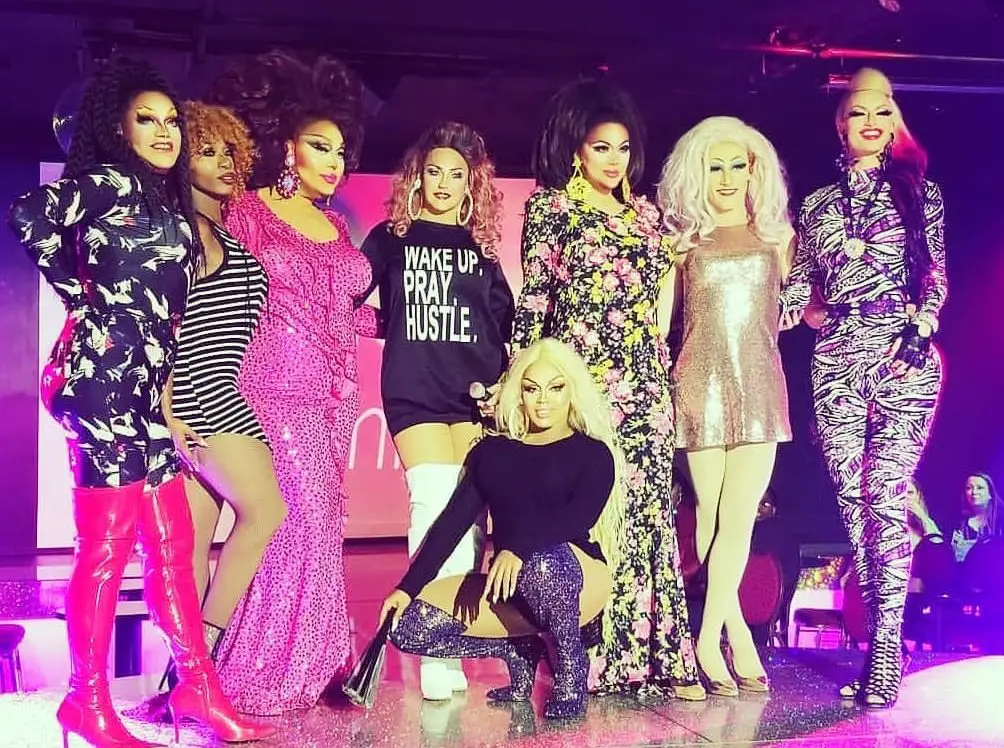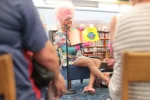Minneapolis has always been a place of opportunity. Since the 20th century, it’s provided a home for the oppressed and the arts, and sometimes, both together. The LGBTQ community has especially found this place to take root in a world that treated them like dirt. Minneapolis gave them exactly what they needed to blossom with drag — not only a chance to survive but an opportunity to thrive.
“Drag” can mean many things. It’s been defined in the contexts of smoking cigarettes, heavy lifting and even farming. “Drag” is also the action of pulling something heavy, and most of the time with great difficulty. But even then, there’s still motion. Interestingly enough, this could also explain the case for the drag movement in Minnesota and America overall.
History doesn’t look kindly on homosexuality or those defying the gender quo. For centuries, these people were persecuted, their right to self-appreciation stripped and whatever was left of them, chained and weighted. All hope seemed lost, but the community refused to box their dresses and stilettos. Instead, the underground drag scene emerged and, although it yanked a scorning society behind it, it still found ways to move.
Cross-Dressing as a Right
The real meaning behind the trending term comes from ancient theater, where women were not allowed to publicly perform. Men would cross-dress to play female parts, their long gowns “dragging” across the stage. When homosexuality was outlawed in the U.S., the LGBTQ community went underground. The Prohibition of the ‘20s created public spaces where they could be themselves and cross-dress by their own will. The ‘50s gave rise to the Pansy Craze and an increase in openly gay bars.
The police responded with violence and brutality, many queens and kings beaten, jailed and even killed. However, the community fought back, and the famous Stonewall Riots of 1969 sparked the gay and gender rights movement. Years passed with drag collecting more support from the broader media, and with opportunities like Obergefell v. Hodges and “Ru Paul’s Drag Race,” the last decade solidified drag as a more accepted right and artform.
Minnesota’s Role in the Ensemble
Overall, Minnesota has been one of the most supportive states for the community. It hosted the first national gathering in Minneapolis (1970), and the first local march in the city’s Loring Park (1972). Some of the first openly gay and lesbian government officials were elected in Minnesota and they hold the longest terms from the LGBTQ community nationwide.
Two years before same-sex marriage became a constitutional right, Minnesota legalized it in 2013, and two years before that it was named “Gayest U.S. City” by The Advocate. Mayor R. T. Rybak even took his “Marry Me In” campaign to other Midwestern states that hadn’t legalized it to show Minneapolis’ solidarity.
Gay bars like the Gay 90’s, however, have a long tradition of support for LGBTQ people and the art of drag. Starting as the strip club “Casablanca” in the 1940s, it was renamed “Gay 90’s,” ironically in the 1960s and without the contemporary connotation. Happy Hour was an underground gay bar close to the Gay 90’s, and the two would co-host events until its merge into an openly gay bar in the ’70s.
The bar started its first show in the late ’80s and is still the longest-running in the Midwest. It became the prime spot for drag queens to get their start, but it also provided sanctuary during the sprawling movement, police and public violence, and the AIDS epidemic of the ’90s.
Gay 90’s is known worldwide as a celebrated gay bar, but there are also more queer bars that offer all forms of drag. The Town House, in Minneapolis’ twin city, St. Paul, was the oldest LGBTQ bar, operating since the ‘50s. It hosted three drag shows a week and held a thriving drag king scene of fierce and daring women. Sadly, it was recently bought and converted to the soccer bar “The Black Hart.” The owners do honor its queer traditions and continue to hold drag shows throughout the month.
The Lush Food Bar has also been a wonderful location where any member of the community can perform. A modern alternative, the queer bar was founded in 2008 and serves as both a restaurant and venue. It stresses inclusivity among the community and is known for both drag queen and king shows. Like most bars, its shows are 18+, giving those under 21 a chance to watch and even perform.
The Current State of Drag
Fortunately, drag culture is a lot safer than it used to be. The gay and gender rights movement continues to fight for those in the LGBTQ community, opening doors so that they might continue to express their art.
Shows like “Ru Paul’s Drag Race” bring performers to the mainstream and help gather support. The queer bars of Minnesota also have a better relationship with the police department, who offer their protection through drag show patrols. While the art gains momentum, we hope its route can lead forward from here.
And yet, there are problems that should be addressed. While the queen scene is very well-known, drag kings are “notably absent from the narrative.” Professionals believe this might be due to women’s overall underrepresentation in the media, affecting the entire gender in the entertainment industry.
Another curveball to the scene’s success is what popular king Emi Monson dubs “the gay zoo.” People go to these events to watch predominately LGBTQ people perform, usually in stereotypes they’ve been accustomed to observing since childhood. You might think it reinforces them, but there are different ways to interpret the idea.
You could claim that we should eliminate the stereotypes that have been used to oppress the community for decades. But as with the word queer, why can’t LGBTQ people “take it back”? By enacting these roles in entertainment, queens and kings defy their oppressors and flaunt their defiance.
Drag is important because it refuses to leave injustice unchecked, and even mocks it in the most effortless ways. It is important because it takes the heavy weight of an ignorant society and moves it forward to a better future.
















